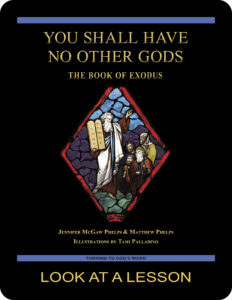cloud
 In this Sunday’s reading from the book of Numbers 11:25–29 (NABRE), God comes down “in a cloud.” This is a rather common occurrence in the Torah, and a brief look at what’s going on with the language may help us understand why.
In this Sunday’s reading from the book of Numbers 11:25–29 (NABRE), God comes down “in a cloud.” This is a rather common occurrence in the Torah, and a brief look at what’s going on with the language may help us understand why.
The Hebrew word for cloud, עָנָן (anan), is related to the word meaning “to cover” or “to veil over.” Clouds can be seen as the veil that separates heaven (the sky) from earth—just as there is a veil in the Temple at Jerusalem that separates the holy of holies from the rest of the Temple.
Why is such a veil necessary? Prior to Christ, we know from the book of Exodus 33:20 (NABRE) that no one can see God’s face and live. When God comes before people, then, he covers or veils his face with a cloud.
 You Shall Have No Other Gods: The Book of Exodus, a 28-lesson Catholic Bible study with an imprimatur, provides an in-depth look at how significant events in biblical history that occurred thousands of years ago to descendants of Jacob remain relevant and even critical for present-day Christians to understand. The deliverance of the Hebrews from slavery in Egypt and the giving of Ten Commandments are examined along with the development of Moses’ relationship to God. Click on the book’s cover to view a sample lesson.
You Shall Have No Other Gods: The Book of Exodus, a 28-lesson Catholic Bible study with an imprimatur, provides an in-depth look at how significant events in biblical history that occurred thousands of years ago to descendants of Jacob remain relevant and even critical for present-day Christians to understand. The deliverance of the Hebrews from slavery in Egypt and the giving of Ten Commandments are examined along with the development of Moses’ relationship to God. Click on the book’s cover to view a sample lesson.
 Click on the picture of the statue of Moses with horns (above) to learn more about Lost in Translation. A new entry is archived each Monday. Contact us to receive Lost in Translation by email every week. You may use any of the contact links on our website to ask Matthew a question.
Click on the picture of the statue of Moses with horns (above) to learn more about Lost in Translation. A new entry is archived each Monday. Contact us to receive Lost in Translation by email every week. You may use any of the contact links on our website to ask Matthew a question.
